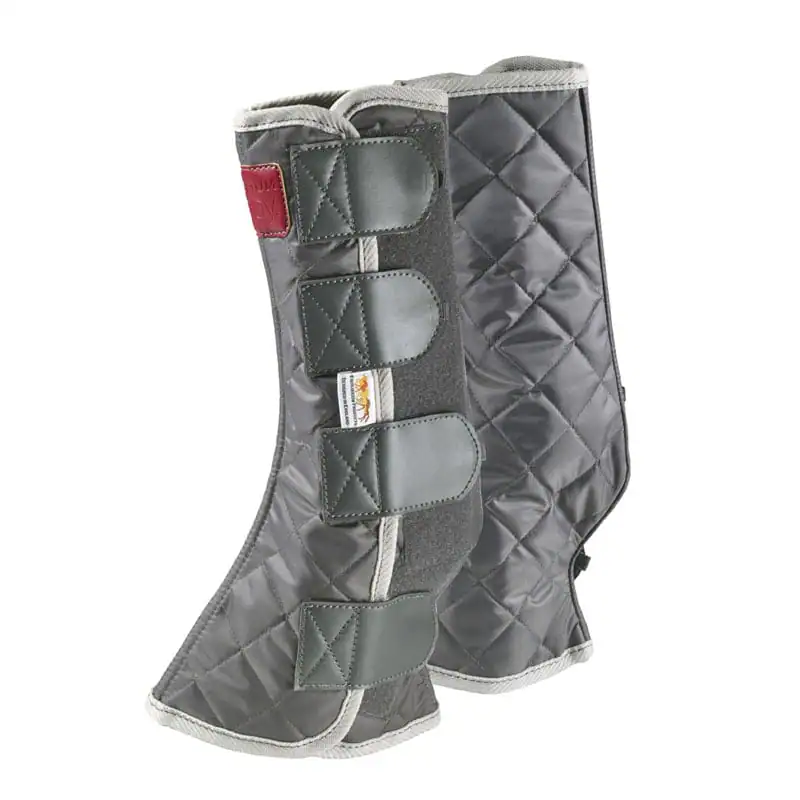1 year product guarantee
Free delivery on most orders over £40
Rated 4.9/5 stars on Feefo

Researched & tested products

Innovating for over 20 years!
Supporting Redwings Horse Sanctuary & Brooke
Feefo Gold Trusted Service Award Winner
Get more time to pay with Klarna
Managing Arthritis
Horses can suffer from arthritis whether young or old, so it is important to know how to manage the condition and what to look out for.
Many horse owners associate arthritis with old age and wear and tear on the body, however, it is actually a surprisingly common condition and can affect horses of all ages and types. Effects can range from mild to very severe, so while some horses will remain sound and be able to continue with a near to normal workload, others will need special care and attention. It is essential to know what to look out for in horses with arthritis, and how best to care for those living with the condition.
What is arthritis?
Arthritis in horses refers to an inflammation of the joints, which causes pain, stiffness and sometimes restriction of movement. Most commonly, arthritis affects the cartilage in between the joints, which can be worn down or damaged through injury, and results in the bone, which is usually smooth, becoming rough. When the damaged cartilage and bone are moved, the joints become inflamed, painful and often swell – this is why arthritis is usually most prevalent in lower, weight bearing joints. It can affect one singular joint or many joints at one time.
The most common form of arthritis is the chronic progressive form, known as Degenerative Joint Disease, or osteoarthritis. This progresses over time, and once established, cannot be fully cured, only maintained. This type of arthritis includes ringbone (which affects the pastern or coffin joints), and bone spavin (which affects the lower hock joints).
Category
Arthritis, Equine Ailments, WellbeingLook out for the signs
Although the causes of the progressive forms of arthritis are not known, there are a number of signs to look out for. It is important to recognise arthritis as early as possible, as this will allow the best possible management of the condition and reduce the risk of further damage. As part of your daily routine it is important to check the legs and joints – signs of arthritis include:
• Bulging or swelling of the joints
• Joints that are unusually warm to the touch
• Lameness or pain on flexion
• General stiffness during movement
• Difficulty in getting up after lying down or rolling
Horses most at risk
Although, generally, arthritis is more prevalent in older horses when the joints begin to wear out, it can also occur in younger horses, especially those who are in heavy or stressful work. There can be a number of other contributing factors, such as exercise on hard ground, which can increase the risk of concussion and pressure to the joints, and poor conformation, which can distribute uneven pressure on certain joints.
Managing arthritis
As the effects of degenerative arthritis are not reversible, it is important to focus on effective management of the condition - this includes working to stop the arthritis progressing further, and relieving pain. Be aware of what might place extra stress on your horse's joints and try to minimise these activities, if possible. Courses of action usually depend on the severity of the condition - often gentle exercise can help the stiffness caused by arthritis, but for a horse in heavy work, rest and a reduced workload may be necessary.
Exercise on hard or uneven ground places greater pressure on joints, so be aware of the conditions your horse is working in. In some cases your vet may prescribe an anti-inflammatory drug, such as Phenylbutazone (bute) to reduce heat, inflammation and pain, and restore the joints to a manageable condition.
If in doubt consult your vet
If you are worried about your horse’s condition, it is always wise to consult your vet, who will able to diagnose arthritis and help you can decide on the best course of action. It is important to remember that every horse is different, so what works for one may not work for another. Many horses living with arthritis continue to lead very happy and active lives, so with effective management it is possible cope with the condition, and keep pain and degeneration at bay.
Why not take a look at our Magnetic Range...
View all products-
 Equilibrium Magnetic Chaps£79.99 View product
Equilibrium Magnetic Chaps£79.99 View productEquilibrium Magnetic Chaps
Magnets where YOU want to support mobility, aid joint function…
-
 Equilibrium Hind & Hock Magnetic Chaps£89.99 View product
Equilibrium Hind & Hock Magnetic Chaps£89.99 View productEquilibrium Hind & Hock Magnetic Chaps
Magnets where YOU want from hoof to hock, to support…
